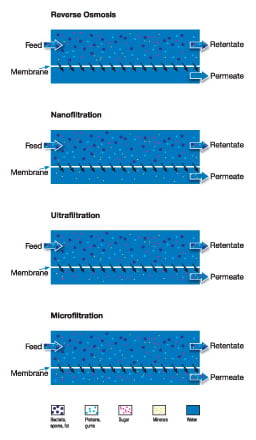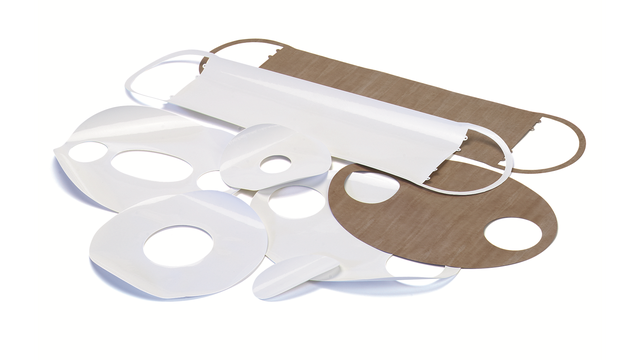UF flat sheet
The selection of ultrafiltration flat sheet membranes from Alfa Laval covers a broad spectrum of flux properties and molecular weight cut-off values. The membranes are used in an extensive range of processes applied in the food, beverage, dairy, biotech and pharmaceutical industries
Alfa Laval offers a wide range of flat sheet membranes for ultrafiltration (UF) with various molecular weight cut-off (MWCO) values and flux properties. The membranes are available in different series characterized by the nature of the membrane. Common for all series is the unique construction on either polypropylene (PP) or polyester (PE) suppport material which provides optimum cleaning conditions.
PP series
The PP series of flat sheet Alfa Laval membranes for ultrafiltration covers the membrane types GR, FS, RC, ETNA and UFX10pHt.
- The GR membrane types are made of either polysulphone or polyethersulphone with MWCO values ranging from 100,000 to 2,000.
- The FS membrane is made of fluoro polymer and has a MWCO value of 100,000.
- The RC membrane is made of regenerated cellulose acetate with a MWCO value of 10,000.
- The ETNA membrane types are made of composite fluoro polymer with 1,000 and 10,000 MWCO values.
- The UFX10pHt membrane is characterized by being resistant to high pH values and temperatures. It is made of polysulphone, permanently hydrophilic and has a MWCO value of 10,000.
PE series
In the PE series of flat sheet Alfa Laval membranes for ultrafiltration you will find the RC10PE membrane which is made of regenerated cellulose acetate. This membrane has a MWCO value of 10,000.
UF Dairy series
The series of Alfa Laval flat sheet ultrafiltration membranes for the dairy industry is made of either polysulphone or polyethersulphone with MWCO values ranging from 20,000 to 5,000.
Benefits
- cover a broad spectrum of flux properties, pore sizes, molecular weight cut-off values and rejection capabilities
- available by the metre, as standard 20 x 20 cm sheets or cut into flat sections to fit into all Alfa Laval plate-and-frame module configurations
- delivered with necessary lock and passage rings
- suitable for extensive range of processes
- manufactured by Alfa Laval's own membrane centre
How it works

Reverse osmosis (RO)
RO uses the tightest possible membrane in liquid separation. In principle, water is the only material that can permeate the membrane. All other materials (salts, sugars, etc.) will be unable to pass through.
Nanofiltration (NF)
NF is not as fine a separation process as reverse osmosis, and uses membranes that are slightly more open. Nanofiltration allows small ions to pass through while excluding larger ions and most organic components.
Ultrafiltration (UF)
UF involves using membranes in which the pores are larger and the pressure is relatively low. Salts, sugars, organic acids and smaller peptides are allowed to pass, while proteins, fats and polysaccharides are not.
Microfiltration (MF)
In MF, suspended solids, bacteria and fat globules are normally the only substances not allowed to pass through.

